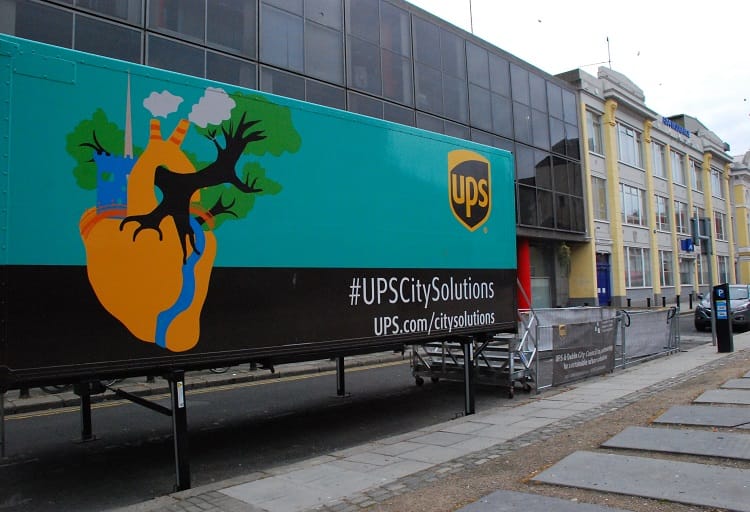What’s the best way to tell area residents about plans for a new asylum shelter nearby?
The government should tell communities directly about plans for new asylum shelters, some activists and politicians say.
At this month’s transport committee meeting: an update on making the city better for pedestrians, and a review of how speed limits are working out.

Liffey Street in the north inner city is up next for a makeover under Dublin City Council’s plans for public spaces in the city.
Upgrades include partial pedestrianisation of the street and better lighting and paving, according to Leslie Moore, the head of the council’s parks service. The council plans to launch a public consultation for the project next year, he said.
At a recent transport committee meeting, Moore updated councillors on progress on the Public Realm Masterplan, which aims “to create a pedestrian friendly core”.
Wolfe Tone Square – where some residents have campaigned for more than a decade for the concrete to be replaced with greenery – will see more “greening” over the coming year and traffic-calming measures, said Moore.
The committee’s chair, Green Party Councillor Ciarán Cuffe, welcomed the presentation but asked for more regular updates on the plan.
“I think we need some reporting mechanism of projects and how they’re progressing,” he said.
There were mixed findings from Dublin City Council’s recent review of 30 km/h speed-limit zones, which were brought in outside in the city centre in March to try to reduce speeding on residential streets.
Senior Executive Engineer Dermot Stevenson told councillors at last week’s transport meeting that the initiative has been largely successful.
Forty streets in Dublin were surveyed before and after the speed limit changes.
Vehicles travelled more slowly on 15 streets on the southside and 17 streets on the northside, said Stevenson. Eight streets showed either an increase or no change at all.
To gauge the success of the zones, the council’s engineering department carried out speed surveys, behaviour and attitude surveys, and noise and air pollution studies.
“Based on what we’ve seen we are considering it to be somewhat of a success,” said Stevenson, at last week’s meeting.
While they said they were encouraged by the results so far, members of the transport committee called for more signage and enforcement.
“There’s going to have be a level of enforcement that’s going to increase,” said Colm Ryder of Dublin Cycling Campaign, who sits on the committee.
The council plans to roll out more 30 km/h zones in early 2018.

Since May this year more than 2,500 stop-start delivery vehicle journeys – the kind that are typical for delivery vehicles with lots of drop-offs – have been removed from the city centre, according to the council.
Back in May, Dublin City Council started a pilot project with UPS setting up a hub on Wolf Tone Square where bicycle couriers can take over city-centre deliveries from larger vehicles that take up space and block cycle lanes.
The project has been a success, said Senior Engineer Mary Hussey at last week’s meeting of the transport committee. The council is now drafting bye-laws to roll out the initiative elsewhere in the city.
Hussey said this might involve some kind of license fee and permit fees for future hubs.
Both independent Councillor Mannix Flynn and the chair of the committee, Green Party Councillor Ciarán Cuffe, wanted to make sure the proposed bye-laws were as strict as possible, to ensure future hubs are used for deliveries only and not trade.
Said Hussy: “We don’t want a proliferation of these hubs around the place. It would be low numbers that we would envisage.”